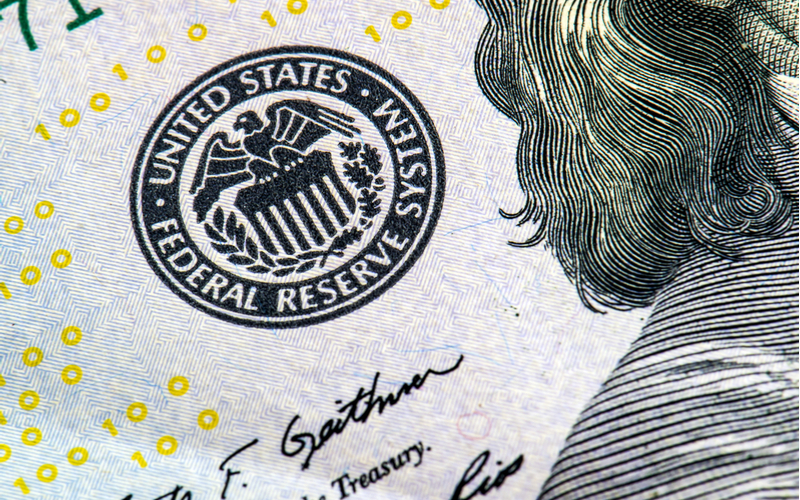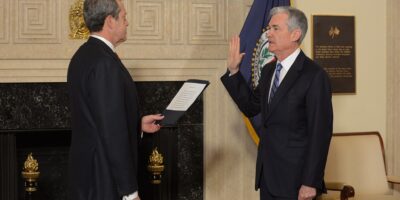What Is Money Velocity and Why Does It Matter?
The weak link in monetary policy is the connection between money as a stock and money in circulation, the so-called velocity of money. The velocity of the circulation of money refers to the frequency of the monetary transactions in an economy. One unit of money serves for several transactions over time.
Because “money” is not a definite term, the dimension of the stock of money depends on the definition of the aggregate. To determine the velocity of money, the monetary authorities use various aggregates such as the monetary base or the monetary stock M1 (cash and deposits) or the wider aggregates M2 or M3 as references.
In the first case, the definition answers the question by what factor the amount of base money transforms into nominal gross domestic product. When M1 is used, the question is by which factor circulating cash and deposits multiply into nominal national income.
Whatever the aggregate used, the velocity of money can strengthen or weaken the effects of a change of the amount of money. The countermovement of the velocity can change an increase of the stock of money into a contraction or turn a monetary contraction of the stock into an expansion. Inflationary expectations lead to a higher ratio of the velocity of money while deflationary and dis-inflationary expectations lead to a lower ratio of the velocity.
The frequency of the monetary transactions depends on the decisions of the individual users of money in the economy. When people decide to use money more rapidly, the velocity rises, and this would accelerate the effect of the expansion of the monetary stock. When, in contrast, the public uses available money more slowly, the velocity falls. Such actions would offset the effect of the expansion of the stock of money, or, in the case of a reduction of the stock of money, accelerate the contraction.
The velocity of the circulation of money is subject to strong swings. Because the ratio is not stable, the effects of changes in the money supply are not certain. There are no tools to control the velocity. The monetary authorities are not able to foresee how the velocity of money will change. The trends may be long or short, and when they are long and seem to be stable, they may change abruptly. A reliable calculation of the future trend is not possible even if many data points are available.
As the graph shows, shows, the velocity of money collapsed during the Great Depression of the 1930s. The long period of the increase of the velocity lasted from the late 1940s until 1980 before the trend turned downwards again. An even steeper decline of the velocity took place since the outbreak of the financial crisis in 2008.
The downturn in the 1980s occurred after the Federal Reserve (FED) had introduced its new monetary policy. It turned out that the measures taken were more restrictive than intended. The policymakers at the central bank presumed that the decades-long trend would continue. The U.S. interest rate rose, and the American economy plunged into a recession that dragged many of the indebted developing countries into insolvency. The deceptive relationship between the money supply and the nominal gross domestic product over the decades before 1980 induced the FED to implant a more restrictive monetary policy than was the intent.
Loss of Control
A country’s central bank has the tools to control the monetary base, but it cannot determine how and to which degree the central bank’s money enters the economy and whether the contractive or expansionary intention of the central bank will be strengthened or aborted by the individual economic actors’ use of the money.
The most recent example of such a policy failure is the concept of the so-called ‘quantitative easing’. The contraction of the velocity of circulation of money explains why the massive increase of the monetary base by the American central bank has not led to a price inflation.
Since the crisis of 2008, the Fed has pushed up the monetary base from 872.3 billion in August 2008 to 4.1 trillion US dollars in August 2014. Yet the price level did not rise as expected. Nor came it to the desired strong recovery of the economy. The expansion of the stock of money was thwarted by a drastic fall of the ratio of velocity from 17 to four (Figure 1).
In as much as the FED could not produce a solid upswing in the past ten years, it will have trouble to curb a price inflation in the future. If the velocity of circulation should rise faster than the central bank is able and willing to raise interest rates and to reduce the money stock, spending would run out of control.
In the years to come, we may face the dilemma that the intention of the central bank to reverse its policy of quantitative easing by ‘tapering’ the blow-up of the monetary base will fail when the ratio of the velocity of money will rise again. Recent data indicate that such a trend may be in the making.
Although the weakest link in the chain, the velocity of the circulation is not the only weak link in the chain of the monetary transmission mechanism. The problems of monetary policy begin with finding an adequate definition of money.
Doubts continue with the effects of the central bank balances on the balances of the commercial banks. Theoretically, the link between the money stock of M1 multiplied by its velocity and the nominal gross domestic product is a definitional identity. Yet the real issue remains opaque because no-one knows exactly how much the monetary impulses will stimulate the real economy or affect mainly nominal values through the price level.
The promise of the central bankers to act as the caretaker of the nation’s money is a great illusion. Even more preposterous is the claim of the central bankers that they could keep the economy on the path of a low-inflation economic growth path.
Rather, the opposite is true. Central banks have become the source of ubiquitous moral hazard in the financial system. This way, central banking itself creates the instability it promises to prevent and to cure. There is the tragic twist to this situation that when the crises occur, the public is made to believe that the culprit is the free market economy when in fact it is government and central bank interventionism that produced the mess.











